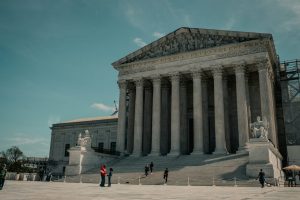Squatters’ Rights: Legal Loopholes and Property Owner Protections
As real estate prices continue to skyrocket, more and more people are turning to alternative housing options. And for some, that means taking up residence in a vacant or abandoned property without the owner’s permission. This practice, known as squatting, may seem harmless to some, but it can actually have serious legal consequences for both the squatter and the property owner.
Squatters’ Rights: What Are They?
Squatters’ rights, also known as adverse possession, refer to the legal principle that allows an individual to claim ownership of a property if they continuously occupy it for a certain period of time without the owner’s permission. The rules and time frames for squatters’ rights vary by state, but generally, a squatter must meet certain criteria in order to make a claim.
Legal Loopholes for Squatters
One of the biggest loopholes for squatters is that many states require the property owner to take legal action to remove them from the property. If the owner does not take action within a certain period of time, the squatter may be able to claim ownership under adverse possession laws. This can be a lengthy and expensive process for property owners, giving squatters an advantage.
Minimal Occupancy Requirements
In some states, squatters may only need to occupy the property for a certain number of years in order to gain rights. For example, in New York, a squatter must occupy the property for 10 years before they can claim ownership. This may seem like a long time, but for those who are able to fly under the radar and avoid eviction, it can be a worthwhile investment for a permanent place to call home.
No Proof of Payment Required
Another common loophole for squatters is that they may not be required to show proof of payment for the property. This means that even if they did not purchase or rent the property from the owner, they may still be able to claim ownership after a certain amount of time. This is often the case in situations where a property has been vacant for a long time and the owner is unaware of the squatter’s presence.
Property Owner Protections
While squatters’ rights may seem like a scary prospect for property owners, there are measures that can be taken to protect against this potential threat.
Posting “No Trespassing” Signs
One of the simplest and most effective ways to protect against squatters is to post “No Trespassing” signs on the property. This makes it clear that the owner does not consent to anyone entering the property without permission and can help dissuade potential squatters.
Routine Property Inspections
Regularly inspecting the property can also help to prevent squatters from taking up residence. This allows owners to catch any signs of occupancy early on and take action before it becomes a bigger issue.
File a Lawsuit for Trespassing/Eviction
If squatters are identified on the property, owners should take legal action as soon as possible. This may involve filing a lawsuit for trespassing or eviction, depending on the state’s laws. The longer the owner waits to take action, the stronger the squatter’s case may become.
Ultimately, squatters’ rights can be a complicated and unpredictable issue for both property owners and squatters themselves. To avoid any legal disputes, it’s important for owners to properly secure and maintain their properties, while squatters should always obtain permission from the owner before occupying any property.







